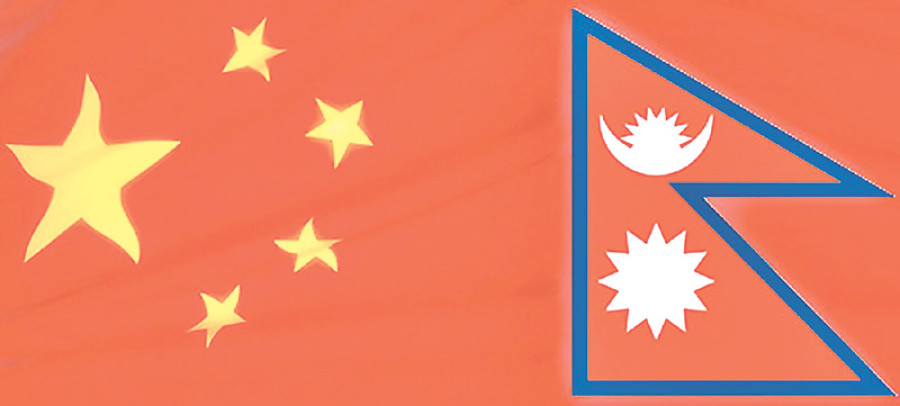Opinion
Historical channel
Nepal has been conducting entrepot trade across the Himalaya since ancient times
Ram Chandra Pokhrel
China’s economy emerged as a dynamic force in the overall development of the country after the ‘principle of reforming the economic structure’ was laid down by the Third Plenary Session of the 11th Central Committee of the Communist Party of China in 1978, and today it is the second largest economy in the world. China is now focusing on regional cooperation and connecting countries across the continent for mutual benefit. Its willingness to share experiences with neighbours such as a least developed country like Nepal can be beneficial for both sides. The One Belt One Road (OBOR) initiative propounded by Chinese President Xi Jinping can be taken as yet another opportunity for Nepal. The OBOR initiative may provide an effective way to develop transport connectivity with major trade routes near the Nepal-China border.
Nepal as a precious gem
Li Tao, executive director of the Institute of South Asian Studies, Sichuan University, has written that Nepal’s strategic location is a geographical advantage. She has also described Nepal as the gateway and starting point for China’s western-oriented vision of opening up westward corridor development.
Since the sixth century, Nepal has been conducting entrepot trade across the Himalaya. The Kathmandu Valley, also known as Nepal Proper, was influenced by a wonderful mixture of southern and northern cultures to which it was exposed through its trade relations with the Indian plains and the Tibetan plateau. The Lichchhavi dynasty maintained very successful foreign relations with its two immediate neighbours, India and China. By maintaining neutrality and pursuing peace, Nepal enjoyed independence through the centuries in a natural way that can be described as a unique coincidence of human civilisation.
Nepal has previously been described as a yam between two boulders, and now as a bridge in Asia. Li Tao has written that Nepal is sandwiched between two hard rocks and has turned into a hard stone, a precious gem, due to pressure created by geological processes. Thus, we can call it the gem of Asia. The revolution of 1951 ended the century-old Rana autocracy, and since then Nepal has expanded international relations, introduced planned development, and most importantly, continued the struggle to end poverty.
Opening the iron gate
For centuries, the people of Nepal conducted trade with Tibet by passing through deep Himalayan gorges with caravans of mules and yaks. In the mid-1960s, a modern highway built with Chinese assistance replaced the old caravan route. Though the 1951 revolution opened the iron gate which had closed Nepal off from the world, its relations with China had not been renewed in the modern and changed context.
In 1954, the then Chinese ambassador to India, Yuan Chung-hsien, wrote to the then Nepal ambassador to India, Mahendra Bikram Shah, expressing China’s willingness to establish diplomatic relations with Nepal on the basis of the five principles of peaceful coexistence. The ambassador also wrote that China was willing to enhance economic cooperation with the coastal countries of the Indian Ocean. The ambassador mentioned the joint statements issued by China and India, and China and Burma (Myanmar) on the basis of the five principles of peaceful coexistence. China’s recent OBOR initiative reflects the same desire expressed in the joint statements issued six decades ago: China wishes to have close links with the South Asian region.
Relative stability
Despite a growing desire to develop trade links with and through Nepal, China has often indicated her reluctance and doubt due to the fragile nature of Nepali politics. Nepal has changed its national government seven times in eight years since 2008. The Chinese leadership is concerned by such frequent changes of government in Nepal. However, Nepal has succeeded in promulgating the constitution with an overwhelming majority. A decade-long Maoist armed conflict has been resolved through the historic peace process. Moreover, with the goodwill and support of friendly countries, donor agencies and other institutions, Nepal was able to organise emergency rescue and relief operations and create a national fund of Rs5.6 billion for the rehabilitation of the victims and the reconstruction of structures damaged by the 2015 earthquake.
However, the challenges are not over. The implementation of the constitution by holding local elections and the second amendment to the constitution are among the great challenges. Discontent prevails in the Tarai-Madhes over sections of the constitution. Demands of Madhes-based parties for amending the constitution have to be addressed legally and politically. The current focus has been on holding local elections within the stipulated time frame provisioned in the constitution.
In sum, since Nepal was declared a republic, it has been exercising state power through a constitutional government. The judiciary is a constitutional authority. State mechanisms including the security forces which are responsible for maintaining peace and order are functioning satisfactorily. These are all indicators of political stability. As an immediate neighbour, China has long been familiar with Nepal and its politics, and is expected to continue and increase cooperation and support for the country’s economic development.
- Pokhrel is a member of Legislature-Parliament




 12.12°C Kathmandu
12.12°C Kathmandu









%20(1).jpg&w=300&height=200)

